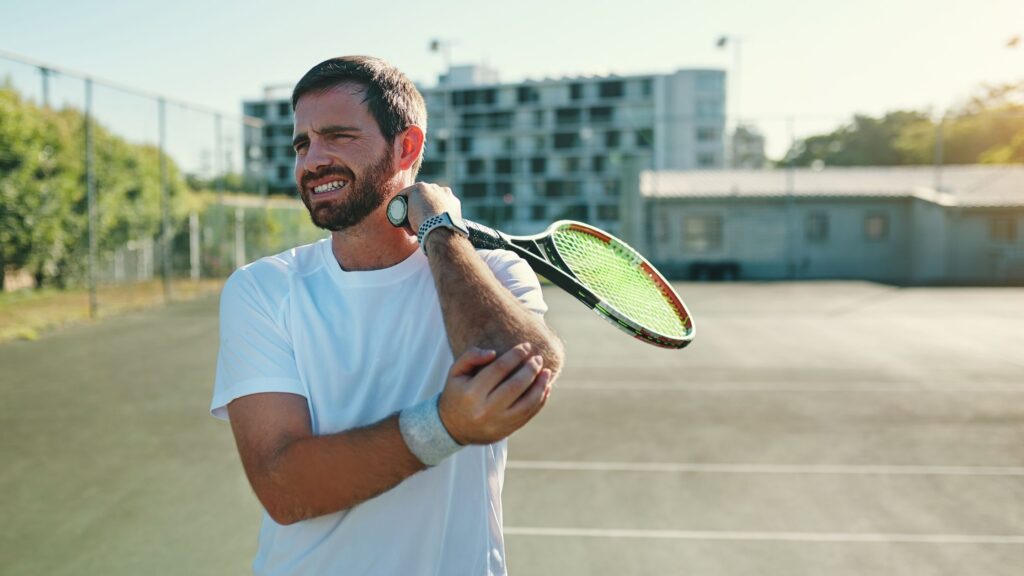For athletes who rely heavily on overhead throwing—especially baseball pitchers—few injuries are as career-altering as a UCL tear. The ulnar collateral ligament (UCL), located on the inside of the elbow, is essential for stability during the high-stress motion of throwing. When this ligament becomes torn or severely damaged, athletes may require Tommy John surgery, a reconstructive procedure that has helped countless players return to competitive play.
In this article, we’ll break down everything you need to know about UCL injuries, how Tommy John surgery works, and what recovery looks like—especially under the expert care of Dr. Brian Capogna, an orthopedic surgeon with advanced training in treating sports-related elbow injuries.
Understanding UCL Injuries in Athletes
The UCL connects the humerus (upper arm bone) to the ulna (forearm bone) and plays a critical role in stabilizing the elbow joint, especially during forceful throwing motions. When this ligament is overstressed—typically from repetitive throwing—it can stretch, fray, or tear.
Common Causes of UCL Injuries:
- Repetitive overhead throwing, particularly in baseball pitchers
- Poor throwing mechanics
- Overuse without proper rest
- Previous elbow injuries or conditions
Symptoms of a UCL Injury:
- Pain on the inner side of the elbow
- Decreased throwing velocity
- A “pop” sensation during throwing
- Loss of control or accuracy
- Tingling or numbness in the ring and pinky fingers
More details on UCL injuries are available from the American Academy of Orthopaedic Surgeons (AAOS).
What Is Tommy John Surgery?
Tommy John surgery, formally known as UCL reconstruction, was first performed on Major League Baseball pitcher Tommy John in 1974. Since then, it has become the gold standard for treating severe or complete UCL tears in throwing athletes.
The Procedure:
- Graft Harvesting: A tendon (often from the patient’s forearm, hamstring, or a donor) is used to replace the damaged UCL.
- Tunnel Creation: Small holes are drilled into the humerus and ulna.
- Graft Placement: The new tendon is threaded through the tunnels in a figure-eight pattern to mimic the original UCL.
- Fixation: The graft is secured with sutures or screws to allow for integration and healing.
To learn more about the surgical technique, see this overview from Mayo Clinic.
Dr. Brian Capogna’s Approach to Tommy John Surgery
Dr. Capogna brings a high level of precision, experience, and athlete-focused care to every Tommy John surgery he performs. His fellowship training in sports medicine and minimally invasive techniques allows him to:
- Tailor each procedure to the athlete’s level of play, sport demands, and goals
- Minimize surgical trauma for improved healing
- Integrate comprehensive rehab plans for faster, safer returns
Whether you’re a high school pitcher, collegiate athlete, or weekend warrior, you’ll receive personalized, expert care every step of the way.
Recovery Timeline After Tommy John Surgery
While Tommy John surgery has a high success rate, recovery is gradual and requires dedication.
Weeks 1–2: Immediate Post-Op
- Arm is placed in a splint or brace to protect the elbow
- Focus on pain management, swelling control, and gentle hand/wrist movement
Weeks 3–6: Early Mobility
- Transition to a hinged brace allowing limited elbow motion
- Begin physical therapy with a focus on range of motion and joint flexibility
Months 2–4: Strength Building
- Progressive resistance exercises targeting the forearm, biceps, triceps, and shoulder
- Continued work on restoring full mobility
Months 5–9: Functional Rehab
- Return to sport-specific drills and neuromuscular control
- Throwing program begins under guidance
9–12+ Months: Return to Competition
- Pitchers return around the 12-month mark; position players may return sooner
- Ongoing strength and mobility training to prevent reinjury
Is Tommy John Surgery Right for You?
Tommy John surgery is typically recommended for athletes who:
- Have a complete UCL tear confirmed via MRI
- Experience elbow instability that doesn’t improve with rest or rehab
- Are competitive throwers aiming to return to high-level performance
In some cases, non-surgical treatments—like platelet-rich plasma (PRP) injections or extended rehab—may be effective for partial tears. Dr. Capogna provides a full evaluation to determine the best path forward.
Preventing UCL Injuries
While not all injuries are avoidable, prevention strategies can reduce your risk:
- Follow pitch count guidelines and rest periods
- Focus on proper throwing mechanics
- Strengthen the shoulder, forearm, and core muscles
- Avoid year-round throwing without breaks
Resources like MLB’s Pitch Smart Guidelines are helpful for youth athletes and parents.
Get Back in the Game with Expert Elbow Care
If you’re experiencing elbow pain during throwing or have been diagnosed with a UCL injury, don’t wait to seek help. Early intervention can make all the difference in your outcome.
As a sports medicine specialist with experience in Tommy John surgery and UCL injury treatment, I’m committed to helping athletes heal, rebuild strength, and return to the sport they love.
📞 Call my office at (516) 627-8717 or visit briancapognamd.com to schedule a consultation.
People Also Ask
How do I know if I need Tommy John surgery?
If you’re a throwing athlete with a confirmed UCL tear and persistent elbow instability that doesn’t improve with rest or rehab, surgery may be the best option.
How long is recovery from Tommy John surgery?
Full recovery usually takes 9 to 12 months, with pitchers returning to full competition around the one-year mark.
Is Tommy John surgery only for baseball players?
No. While it’s most common in baseball pitchers, any overhead-throwing athlete (e.g., javelin throwers, softball players) may need the procedure.
Can you avoid Tommy John surgery?
Partial tears or less severe injuries may respond well to non-surgical options like rest, rehab, or PRP injections, depending on the athlete and activity level.

